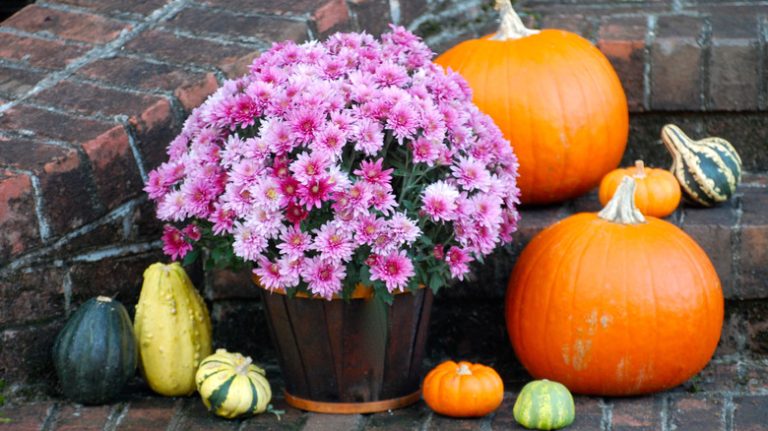When it comes to lighting, there are many options to choose from. Depending on the kind of light you need, you may want to consider different types of bulbs. One popular option is the halogen bulb. Halogens are known for their energy-saving properties and are commonly used in homes and offices. If you’re unsure about how to choose the right bulb for your needs, our guide will help you make sure you’re making the best choice.
One of the first things you should know is the different types of bulbs available. A popular type is the bi-pin bulb, which is commonly used in large fixtures and lamps. Another type is the par bulb, which is often used for floodlights. Each type of bulb has its own temperature and fitting requirements, so it’s important to know what you need before making a purchase.
When it comes to choosing the right bulb for your needs, there are a few factors to consider. One is the voltage of the bulb. Most bulbs have a specific voltage that they require in order to function properly. Another factor to consider is the lumen output of the bulb. The lumen is a measurement of the amount of light that a bulb produces. The higher the lumen, the brighter the light.
If you’re looking for energy-saving options, you may want to consider CFL or LED bulbs. Both of these types of bulbs use less energy than traditional incandescent bulbs, which can help reduce your electricity bill. CFL bulbs are known for their warm color temperature, while LED bulbs come in a variety of colors. LED bulbs also have a longer lifespan than CFL bulbs, making them a popular choice for many consumers.
When it comes to buying bulbs, there are many options available. You can find bulbs at your local hardware store, or you can shop online. There are also specialty lighting stores that carry a wide variety of bulbs and lighting products. One popular online retailer is 1000bulbs.com, which has been in business since 1994 and offers a wide selection of bulbs at competitive prices.
In conclusion, when it comes to choosing the right bulb for your needs, it’s important to consider factors such as the type of bulb, the voltage, and the lumen output. Additionally, energy-saving options such as CFL and LED bulbs can help save on electricity costs. Whether you’re looking for a bulb for your chandelier, your desk lamp, or your ceiling fan, there are bulbs available for every room in your home.
How To Find The Right Light Bulb: A Step-By-Step Guide
When it comes to choosing the right light bulb for your needs, it can be overwhelming with the wide variety available on the market. To help make the process easier, we’ve created this step-by-step guide to assist you throughout the decision-making process.
Step 1: Determine your needs
Before making any decisions, it’s important to consider what you want the light bulb for. Determine the room the bulb will be used in and what kind of lighting you’re looking for. For example, do you need a warm or cool light? This will help you find the right bulb based on the color temperature.
Step 2: Know the bulb’s size and shape
Light bulbs come in different sizes and shapes, so it’s important to measure the fixture to ensure the bulb will fit properly. Common sizes include A19, BR30, and PAR38, while common shapes include standard, candelabra, and globe. Make sure to check the fixture’s specifications to find the right bulb.
Step 3: Consider the bulb’s base type
The base type of a light bulb is crucial, as it determines how the bulb connects to the fixture. Common base types include screw-in (Edison), bayonet, and pin base. Make sure to check the base type of your fixture to find the appropriate bulb.
Step 4: Understand the bulb’s wattage and voltage
When choosing a light bulb, it’s important to know its wattage and voltage. Wattage indicates the bulb’s power consumption, and voltage determines the amount of electrical energy the bulb requires to function. Make sure to check the fixture’s requirements and select a bulb with the appropriate wattage and voltage.
Step 5: Compare bulb types and features
There are various types of light bulbs on the market, including incandescent, LED, fluorescent, and halogen. Each type has its own benefits and drawbacks. Consider factors like energy efficiency, color rendering, and lifespan when comparing different types of bulbs.
Step 6: Check the bulb’s lumen and color temperature
Lumen is the measurement of a bulb’s brightness, and color temperature refers to the light’s appearance. Consider the lumen and color temperature requirements for your space to find a bulb that suits your needs. Lumen is generally more important than wattage when it comes to determining a bulb’s brightness.
Step 7: Research and shop around
Once you have all the necessary information about your desired light bulb, it’s time to start researching and shopping. Visit websites and contact local stores to find the best options available. Compare prices, read customer reviews, and ensure that the bulb you’re considering meets your requirements.
Step 8: Try before you buy
If possible, try out a few different bulbs before making the final purchase. This will give you a better idea of what the light looks like in your space and whether it meets your expectations.
Step 9: Make your selection
Once you’ve gone through the previous steps, it’s time to make your final choice. Consider factors like cost, energy efficiency, and the specific features you’re looking for. Make sure the bulb you choose fits all your criteria and is compatible with your fixture.
By following this step-by-step guide, you’ll be able to find the right light bulb that suits your needs and enhances the ambiance of your home or workspace.
1 Determine what fitting or cap type you need
When it comes to selecting the right bulb for your needs, the first step is to determine what fitting or cap type you require. The fitting or cap type refers to the specific shape and model of the bulb and is typically identified by letters and numbers.
There are several common types of cap fittings, and each correspond to a different type of bulb. For instance, if you have halogens at home, you may need to select a G9 or GU10 fitting. On the other hand, if you have fluorescents, the most common fitting type is known as T8 or T5.
One way to determine the fitting or cap type you need is to look at the existing bulb in the lamp or fixture. Take note of the number of pins or the shape of the cap. If you’re unsure, you can consult the user manual or contact the manufacturer or a lighting company for assistance.
Additionally, it’s important to consider the overall size and shape of the bulb. Some fittings may have a short and stubby shape, while others may have a longer or slimmer shape. The size of the bulb also varies, so make sure to measure the available space where the bulb will be placed.
In terms of cap types, there are also different materials and colours available. Some bulbs may have a clear or frosted glass cover, while others may have a coloured or tinted cover. The cap type can also affect the temperature of the light emitted, so consider the desired lighting effect when making your selection.
Fortunately, there are many resources available to help you find the right fitting or cap type for your bulb. You can visit a lighting shop or browse online websites like 1000bulbs.com for a wide range of options. They often provide detailed descriptions and images to help you make an informed decision.
Keep in mind that if you’re unsure about the fitting or cap type, it’s always helpful to have the old-style bulb on hand for reference. This allows you to compare size, shape, and numbers to ensure a proper fit.
Ultimately, knowing the fitting or cap type you need is crucial for choosing the right bulb. It ensures compatibility, brightness, and overall satisfaction with your lighting experience.
2 Decide if you want CFL halogen or LED
When choosing a bulb, it’s important to decide which type of bulb is best for your needs. There are three main types: CFL (compact fluorescent lamp), halogen, and LED (light-emitting diode).
CFL bulbs are energy-saving and typically come in a spiral or folded tube shape. They are best for general lighting purposes and are usually used in lamps with a screw-in base. CFL bulbs also come in various wattage levels, so you can choose the one that suits your needs best. Keep in mind that CFL bulbs contain a small amount of mercury, so proper disposal is important.
Halogen bulbs are known for their high temperature and bright white light. They are often used in spotlights and floodlights, as well as in certain types of home lighting fixtures. Halogen bulbs are less energy-efficient than CFL and LED bulbs and can get very hot, so caution is needed when handling them.
LED bulbs are becoming increasingly popular due to their energy efficiency and long lifespan. They produce little to no heat and are available in a variety of colors. LED bulbs can be used in a wide range of settings, from residential to commercial. They tend to cost more than CFL and halogen bulbs upfront, but they can save you money in the long run due to their energy-saving capabilities.
When deciding between CFL, halogen, and LED bulbs, it’s important to consider factors such as the level of brightness (measured in lumens), color temperature, and wattage. Each type of bulb has its own unique characteristics and usage scenarios, so understanding your specific needs will help you make an informed decision.
If you’re unsure which type of bulb is best for you, consult with a knowledgeable salesperson or contact a reputable lighting retailer for assistance.
3 Consider brightness and colour
When choosing a bulb, it is important to consider both the brightness and colour. Here are some things to know:
1. Brightness:
Brightness is measured in lumens. The higher the lumens, the brighter the light. Depending on your need, you may want a bulb with more or less brightness. For example, a 40-watt incandescent bulb produces about 450 lumens, while a 100-watt bulb produces about 1600 lumens.
2. Colour:
Colour can affect the mood and ambiance of a room. Different types of bulbs emit different colours of light. For example, warm white light creates a cozy and inviting atmosphere, while cool white light is often used in workspaces. Look for the colour temperature on the packaging, measured in Kelvin (K). A lower Kelvin value indicates a warmer light, while a higher value indicates a cooler light.
3. Comparing bulbs:
When shopping for bulbs, it can be helpful to compare the lumens and colour temperatures. This way, you can determine the amount of light and the colour to expect from each bulb. The packaging usually provides this information to make the comparison easier.
Remember, the best lighting for a room may be achieved through a combination of bulbs with different brightness and colour. Consider the purpose of the room and choose the bulbs accordingly.
4 Find the best shape
When choosing a bulb, it’s important to consider the shape as well. The shape of a bulb can affect the way light is distributed in a room and the overall aesthetic appeal of the lighting fixture. Here are some things to keep in mind when comparing shapes:
1. A-Shape: This is the most common bulb shape and is often used in table lamps and floor lamps. It has a standard base and can fit in most fixtures. A-shape bulbs come in various wattages and are available in different colors, including warm white and cool white.
2. PAR Shape: PAR bulbs are often used for outdoor lighting and can also be found in some indoor fixtures. They have a reflector inside that helps to direct the light in a specific direction. PAR bulbs come in different sizes, each identified by a number that represents the diameter of the bulb in inches.
3. CFL and Circline: CFL bulbs are energy-efficient and can be used in various fixtures, including desk lamps and ceiling fixtures. Circline bulbs are circular in shape and often used in ceiling fixtures. When choosing CFL or circline bulbs, it’s important to check the operating temperature and make sure it’s suitable for the fixture.
4. Halogen: Halogen bulbs are known for their bright, white light and are often used in task lighting and accent lighting. They come in various shapes and sizes, including A-shape, PAR, and reflector shapes. Halogen bulbs generally operate at a higher temperature, so it’s important to consider that when choosing a fixture.
5. Fluorescents: Fluorescent bulbs are energy-efficient and come in different shapes and sizes. They are commonly used in office buildings and can also be found in some residential settings. When choosing fluorescent bulbs, it’s important to consider the color temperature and the number of bulbs needed for the fixture.
The best way to determine the right shape for your needs is to consult with a knowledgeable lighting specialist. They can help guide you through the options and recommend the best shape based on your specific requirements. When shopping for bulbs, be sure to compare the voltage, wattage, and color temperature of each bulb to make sure they are compatible with your fixtures and will provide the desired lighting for your space.
In our company’s online shop, we have a bulb shape finder tool that can help you find the right shape for your needs. Simply input the voltage, wattage, and type of bulb you are looking for, and the finder will provide you with a list of options to choose from. This can save you time and help ensure you make the right choice for your lighting needs.




